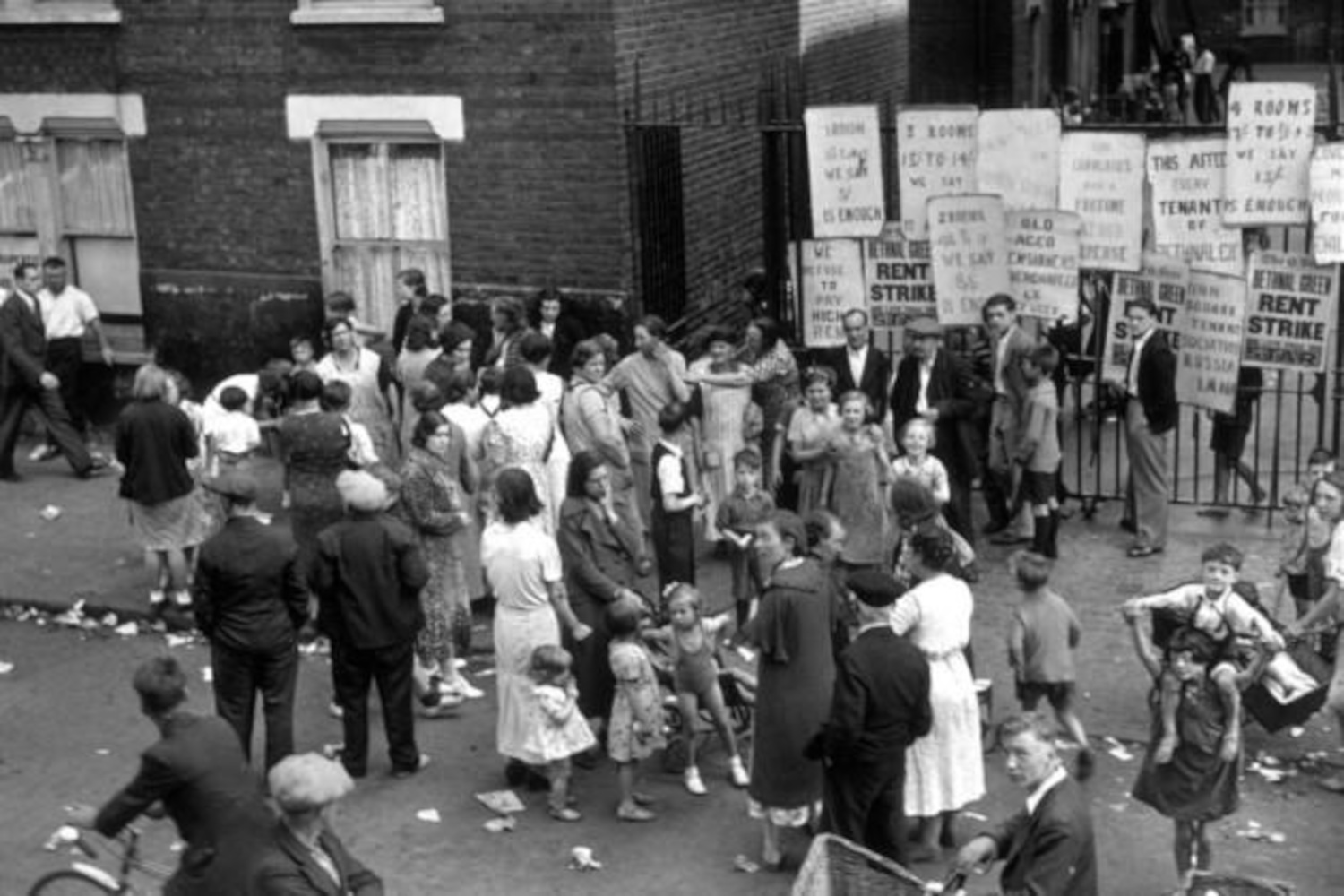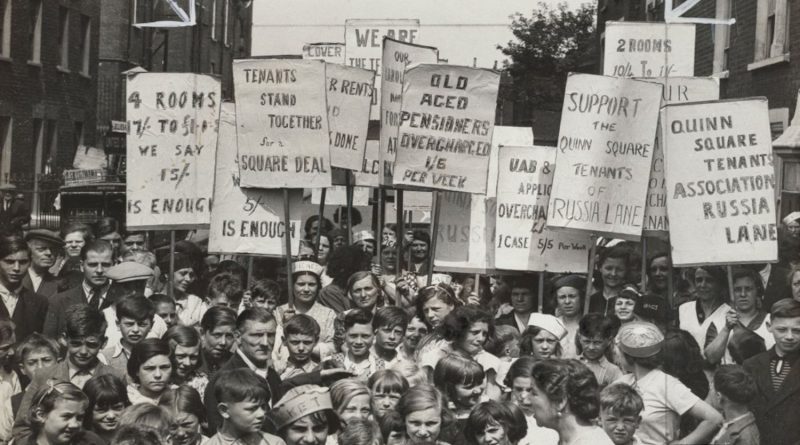Quinn Square Rent Strike 1938: ‘Parents of the working class movement’
In July 1938 residents of Bethnal Green’s Quinn Square initiated a rent strike led by women to protest against high rents and poor living conditions, ultimately securing concessions from the landlord.
If you walk past the Approach Tavern, with its tree-lined courtyard shading a chattering crowd of revellers, and turn left at the corner, you’ll find Quinn Square to your left. It’s a small, quiet enclave between Robinson Road and Russia Lane.
Yet, nearly 80 years ago, the area told a very different story.
On July 1, 1938, over 240 Quinn Square tenants met to address high rents and poor living conditions. All 240 flat residents attended, complaining about broken steps, handrails, wash houses, dampness, door locks, falling ceilings, and peeling wallpaper. In August, they initiated a rent strike until repairs commenced and rent prices lowered.
Women organised and led the dispute, marching through local streets with slogans like “Less Rent, More Repairs” on their placards, and picketing the estate office daily.
Armed with posters attached to broomsticks, the Quinn Square tenants gathered outside their homes and shouted their demands: lower rents and improved repairs, a bold stance against the dire conditions they faced.

The temporary protection of The Rent Control Act of 1915
This story begins much earlier in time, and much further north.
During World War One, munitions factories sprung up in Clydeside, Glasgow, increasing demand for accommodation and landlords profiteered by raising rents.
Over 20,000 families led a strike against the increased rent and subsequent mass evictions, threatening the production of essential munition for the war.
In response, on 23 December 1915, the government introduced the Rent Control Act. The Act capped rents to pre-war levels to prevent landlords from profiteering amid housing demand surpassing supply.
However, it was always intended as a temporary measure, so rent controls gradually waned through the 1920s and 1930s, leaving many homes without any regulations on what landlords could charge.
Decontrolled rents and profiteering Quinn Square landlords
The Quinn Square landlords were ready to exploit this confusion, charging increased rents for those in the decontrolled sector and offering minimal protection for tenants in controlled accommodations. Keen to make the biggest profit margins possible, the Quinn Square landlords spent little on the upkeep of their properties.
The result was that families paid extortionate rent to inhabit slums without running water or toilets. Each household shared one tap among four families and one lavatory for every two families. This meant up to 30 people could end up sharing these amenities.
In the autumn of 1937, tenants set up a Tenant Association demanding that the landlords listen to their requests for reduced rent in both controlled and uncontrolled flats, and improved conditions.
When the caretaker, bailiffs, and five police officers arrived to evict a tenant, members of the Tenant Association gathered in protest. The display of solidarity compelled the bailiffs and police to withdraw without executing the eviction.
Members of the Tenant Association also surveyed controlled tenants and found that out of 90 surveyed, 70 were paying excessive amounts. This would provide them with legal defence against eviction notices.
A few days after the protest, the landlord’s agent responded by hastily offering discounts to uncontrolled tenants, aiming to undermine the tenants’ solidarity instead of meeting the Tenant Association as promised.
The tenant’s set of Clear Demands
As the second payment day arrived, the tenants made their stance clear by placing pickets on the agent’s office door. Women took on the role of picketing daily, wearing paper hats with the word ‘picket’ pencilled on the front. As a gesture of solidarity, not a single tenant from the 247 flats paid their rent.
Quinn Square tenants had a list of ‘Clear Demands’. These included that the landlord recognise their Tenant Association; ensure necessary repairs would be carried out; agree not to take any legal or other action against any tenant without consulting the Tenants’ Association first, and introduce a maximum rent scale for decontrolled tenants, preventing the landlord from charging above it.
The landlords attempted to use the courts to evict tenants by issuing summons against ten tenants for non-payment. But the Tenants’ Association responded with a court summons demanding payment for over-charged rents.
After two weeks of striking, the landlords sat down with the tenants, and this time, they listened, resulting in the landlords’ humiliating defeat.
Bob Graves, secretary of the Tenants Association, pronounced Quinn Square residents as the parents of a working-class movement: ‘Once again the people of the East End of London have shown the way’.
If you enjoyed reading this, you may also enjoy the history of Paradise Gardens.

